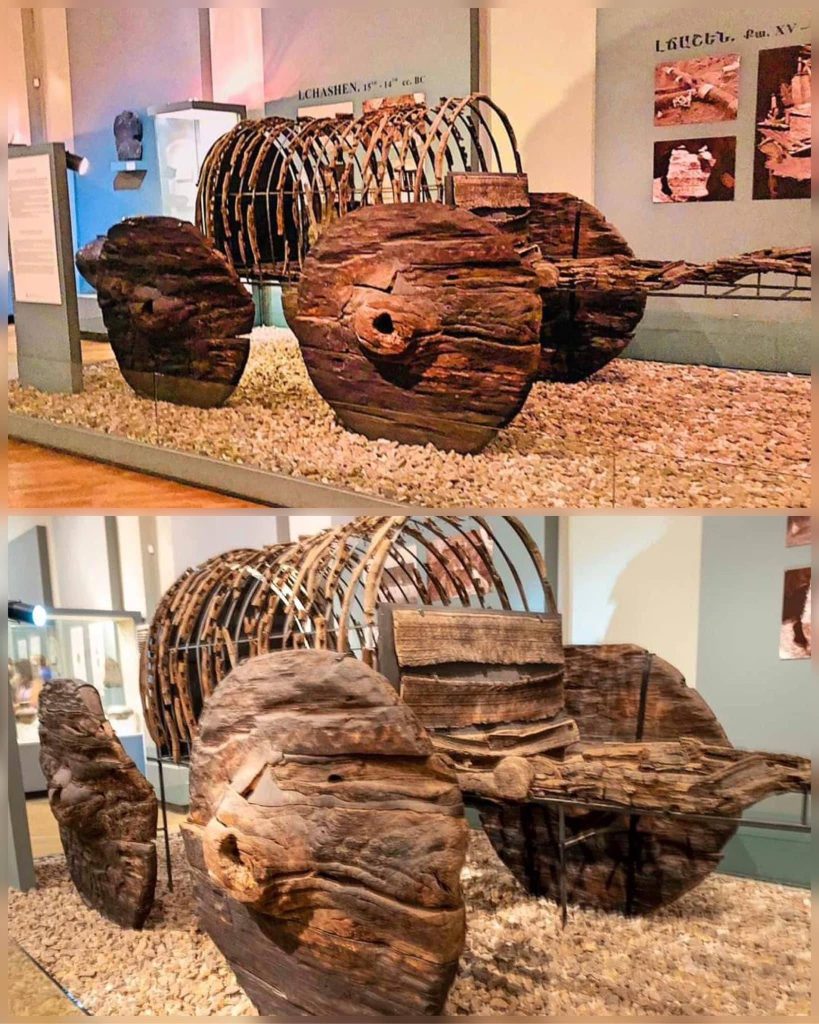In the heart of Armenia, a country steeped in ancient culture and historical wonder, archaeologists have made an astonishing discovery that is reshaping our understanding of early human engineering and transportation. On the tranquil shores of Lake Sevan, near the site known as Lchashen, a team of researchers has unearthed an extraordinary find—oakwood wagons dating back an estimated 4,000 years. Remarkably preserved through the ages, these wooden vehicles are now proudly exhibited at the History Museum of Armenia. Experts believe these may be the oldest wagons ever found on Earth, offering a rare and invaluable window into the technological achievements of ancient societies.

What makes this discovery even more captivating is the level of craftsmanship demonstrated in each wagon. Made entirely from oak, a durable and long-lasting wood, the wagons reflect the high level of skill and precision achieved by early Armenian artisans. Each vehicle was built with four solid wheels, each formed from three meticulously joined oak planks. Their construction reveals a sophisticated understanding of materials and mechanical design, especially considering the time period. Beyond their basic function as a means of transportation, these wagons serve as early examples of structural engineering. The interiors of the wagons were reinforced with a layer of withies—a flexible, rope-like material made from willow or similar plants—providing both strength and resilience. This clever reinforcement technique not only made the wagons more durable but also highlighted the ingenuity of ancient builders who were clearly ahead of their time.
The path these wagons traveled—from being hidden beneath the soil for millennia to becoming centerpieces in a national museum—has captivated historians, scientists, and visitors from around the world. Their discovery has also been documented in several respected academic texts. Notable among them are Beverley Davis’s “Timeline of the Development of the Horse,” which outlines the evolution of transportation in human history, and Professor Stuart Piggott’s authoritative work, “The Earliest Wheeled Transport.” These texts recognize the wagons not just as physical artifacts but as crucial links in the story of civilization’s progress. They reflect how humanity has adapted tools, animals, and materials to create systems of movement that allowed for trade, migration, and cultural exchange.
The historical significance of the Lchashen wagons goes beyond their sheer age or construction. They tell a story of a society with the ability to plan, innovate, and execute complex ideas. For a culture to develop such technology 4,000 years ago indicates that ancient Armenians were more than simple agricultural communities—they were inventors, problem solvers, and visionaries. These wagons might have been used to transport goods, people, or perhaps ceremonial items, but regardless of their original purpose, they symbolize movement—not just in a literal sense, but in the broader context of human development. The act of building and using wheeled vehicles marked a turning point in history, one that changed how humans interacted with geography, distance, and each other.
Visitors to the History Museum of Armenia often find themselves awestruck when standing before these ancient wagons. The experience of viewing them in person is humbling. You’re not merely observing old wooden wheels; you’re stepping into a narrative that began thousands of years ago. It’s a moment that connects modern individuals with their ancestors in a deeply human way. You realize that despite the technological leaps we’ve made, the spark of innovation has always been a part of our species.
Beyond the wagons themselves, the site of Lchashen has proven to be an archaeological treasure trove. The surrounding area contains burial mounds, pottery, tools, and other artifacts that speak to a well-developed and organized society. These finds are helping researchers paint a more complete picture of life during the Bronze Age in this region. And while the wagons remain the most talked-about discovery, they’re part of a larger narrative about ancient Armenia’s influence on regional trade, culture, and technology.
It’s worth noting that Armenia, situated at the crossroads of Europe and Asia, has always played a unique role in human history. This small but culturally rich nation has served as a bridge between civilizations for thousands of years. The discovery of the Lchashen wagons reinforces that idea—suggesting that Armenians were not just passive recipients of outside influence, but active contributors to the advancement of technology and innovation.
In a world where new discoveries constantly rewrite what we know about the past, the importance of preserving and studying these artifacts cannot be overstated. The wagons from Lchashen aren’t just historical objects to be admired—they are educational tools that continue to inform our understanding of how societies evolve. They challenge us to reconsider assumptions about what ancient people were capable of and remind us of the value of archaeological exploration. Every beam of oak, every layer of withy, and every joint in these wagons tells a story that deserves to be heard.
As more research unfolds and as more visitors come to witness these 4,000-year-old masterpieces, the legacy of the Lchashen wagons will undoubtedly continue to grow. They are no longer buried relics—they are ambassadors of history, proudly representing a moment in time when humanity took one of its boldest steps forward. For those fortunate enough to see them in person, they offer a lasting impression of the brilliance and resilience of our ancestors. For historians and archaeologists, they provide a wealth of knowledge that will shape our understanding of the ancient world for generations to come. And for all of us, they serve as a powerful reminder that our drive to build, to connect, and to move forward is as old as civilization itself.





